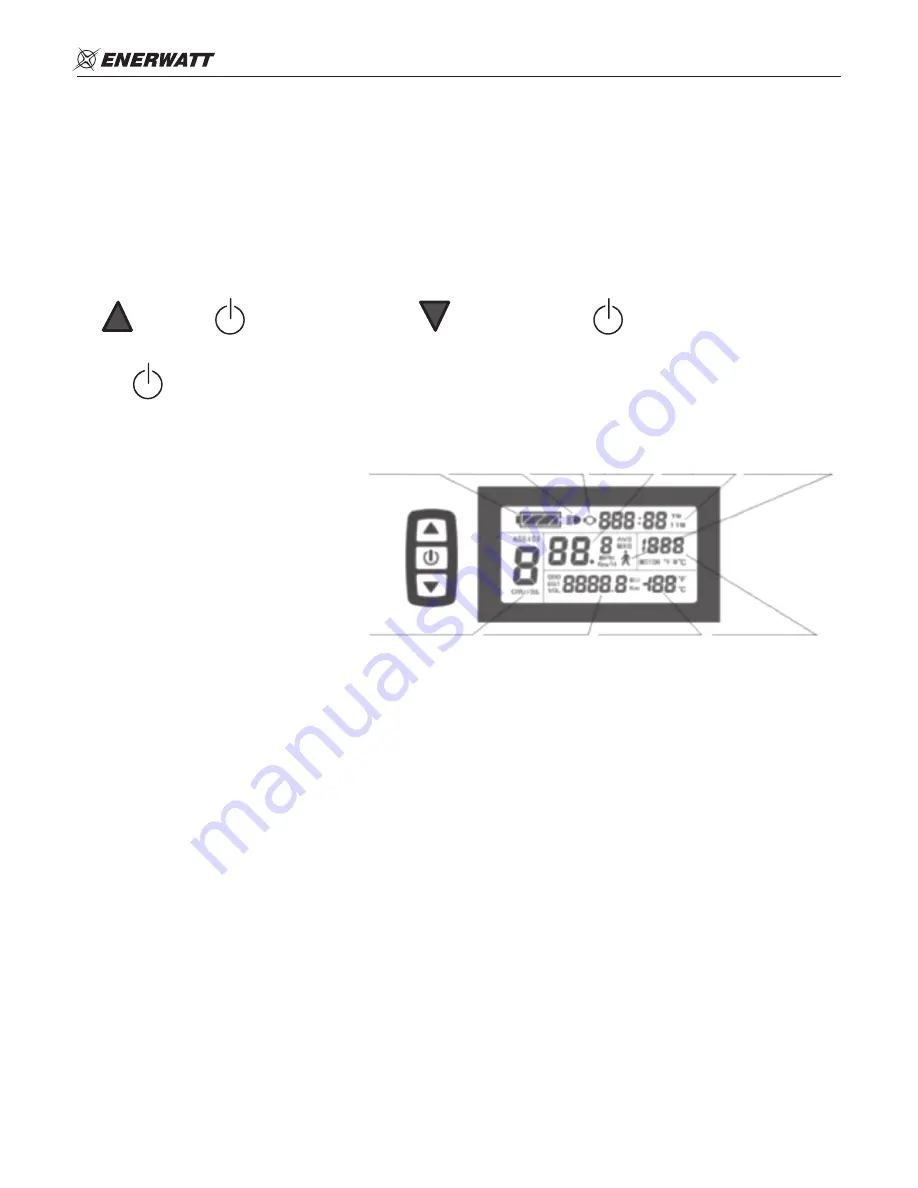
6
MODEL: EWV-SPORT-R
USER’S MANUAL
4. OPERATION AND ADJUSTMENT
4.1 PAS SYSTEM
The PAS system is also known as the 1:1 PAS system. When you do not rotate the throttle but pedal with your feet, the 1:1 pedal assist
system’s sensor will automatically sense your riding speed and control the motor to automatically assist you in maintaining the same
speed, making your ride easier and helping you ride further.
4.2 OPERATING THE DISPLAY
There are 5 power-aid levels; the max speed is 32 km/h. The LCD meter controls the PAS system via operating buttons.
There are three keys on the operating panel, which are the following buttons:
(alt text UP), the button (alt text SW) and (alt text DOWN). Hold the button (SW) down and it powers
on the meter to normal operation mode and provides the controller with power supply. In normal operation mode,
hold the button (SW) long and this powers off the meter and shuts down the power supply of the controllers.
When the e-bike is stopped and you have not pressed a button on the meter for five minutes,
the meter will automatically shut down, and the power supply of the electric vehicle will be powered off.
In power off mode, the power consumption
of the meter and controller is zero.
4.3 BATTERY
As there is a delay between the manufacturing stage and the first usage of a new electrical bicycle (manufacturing, storage, delivery),
it is vital to charge the battery before first usage. It is possible that the battery is not fully charged. Using an alternate charge may
damage the battery, and could even lead to a fire or other dangerous result. Damage to the battery resulting from use of a charger
other than that provided is not covered under our warranty.
4.3.1 INSTALLING AND CHARGING THE BATTERY
1. Carefully check whether the rated input voltage of the charger is consistent with the supply voltage.
2. The battery can be put directly on the bike for charging and can also be removed from the bike to be charged.
3. Connect the charger’s output plug to the battery’s charging port and then connect the charger’s input plug
to the AC power supply.
4. If the battery and charger power indicators are on, this means the battery is charging.
5. After charging, first pull out the input plug of the charger, then the output plug.
The battery needs 6 to 8 hrs. to charge. When the indicator turns from red to green, the battery is fully charged.
A new bike may need to be charged for 8 to 9 hrs. after fully discharging for the first time.
This is to activate the active substances inside the battery. Later, it can be recharged before the battery is completely depleted.
Common sense tips for charging and use:
The battery should be charged in a well-ventilated environment, away from high temperatures, high humidity and fire. As the
battery and the charger are electronic products, high temperature or humidity will corrode their electronic components, resulting
in some harmful gases or smoke, or even explosion. Charging should not be left until the battery is depleted, as this may shorten life
span of the battery. Once the battery is fully charged, the power supply should be unplugged as soon as possible, and the battery
should be disconnected from the charger. The battery should be kept at 50%, especially if the bike is stored for a long period of time.
Be sure to charge battery every month or so.
Battery Capacity
Indicator
Backlights and
Headlights Status
Brake
Status
Vehicle Speed
Display
Running
Counter
6 Km/H Power Assist
Push Function
Motor Operation Power or
Motor Running Temperature
Power Assist Ratio Gear
and Cruise Function
Trip Distance or Real-time
Battery Voltage
Ambient
Temperature






































